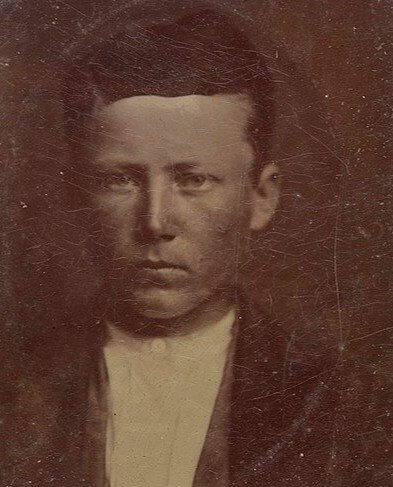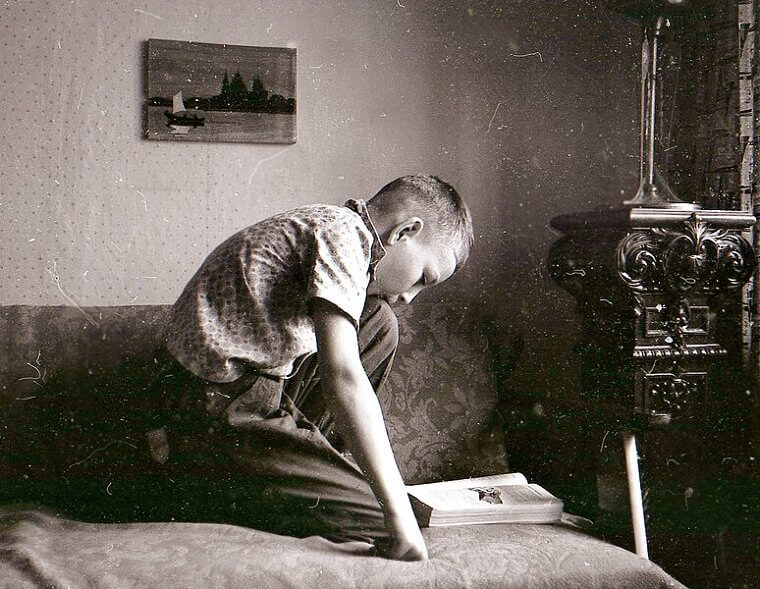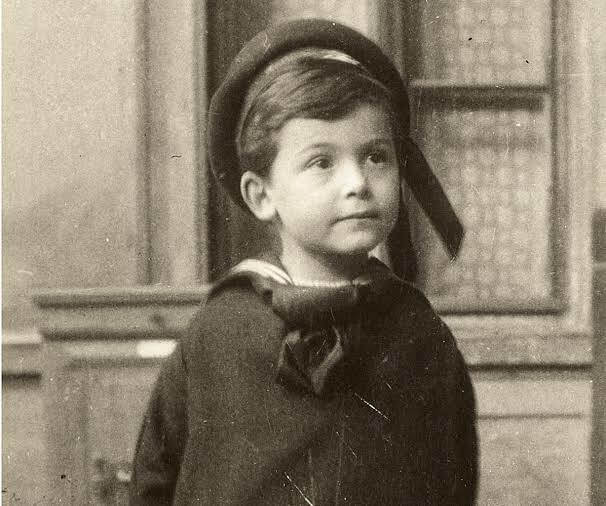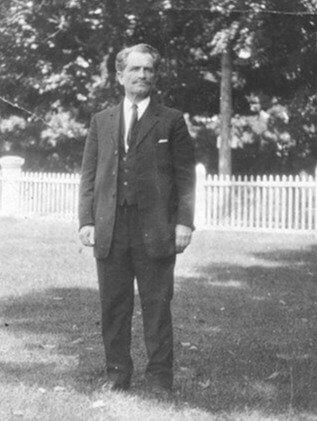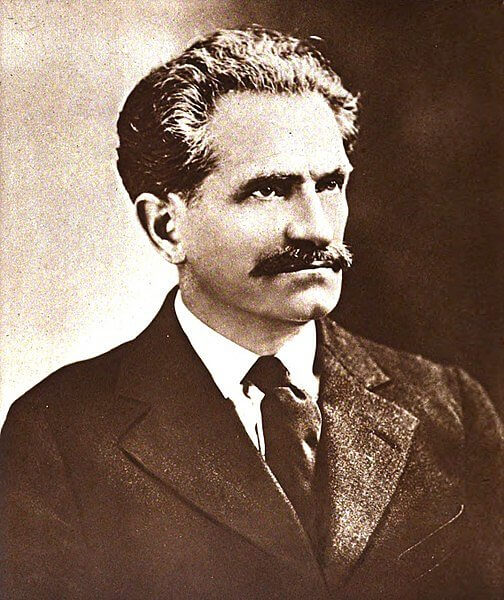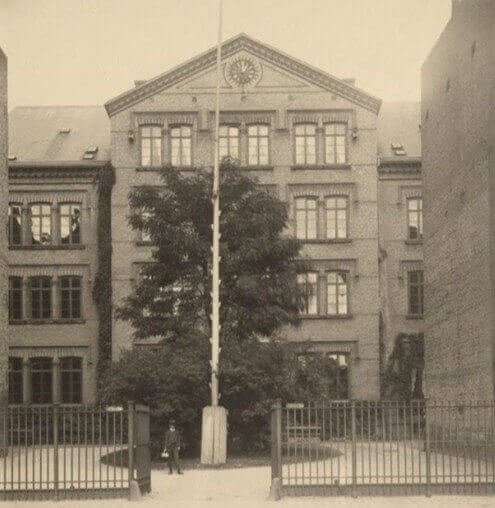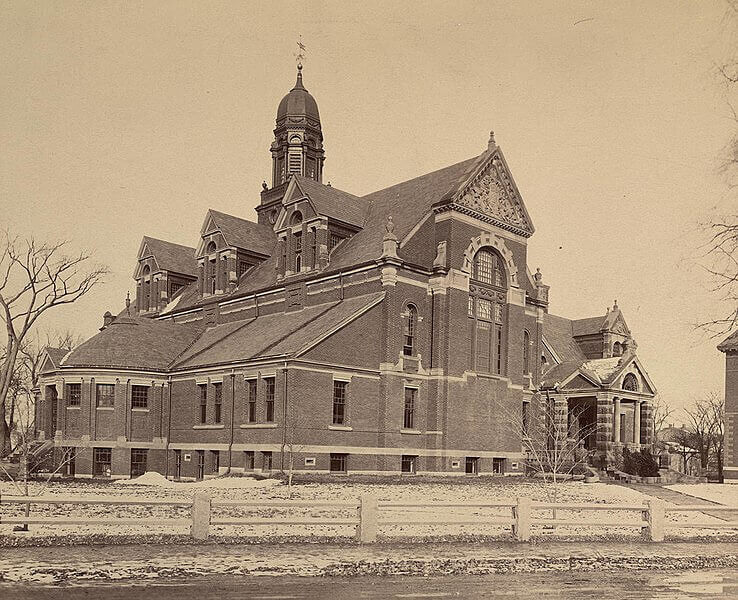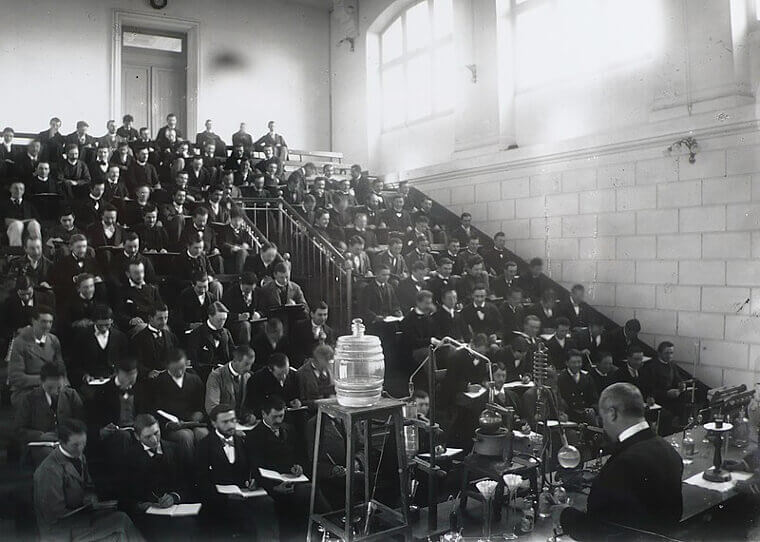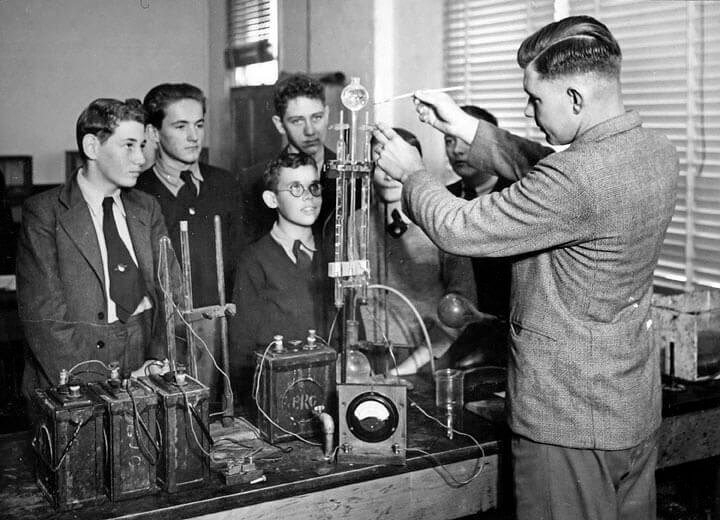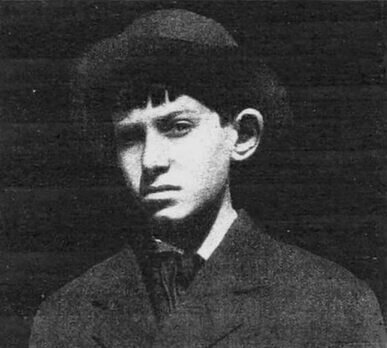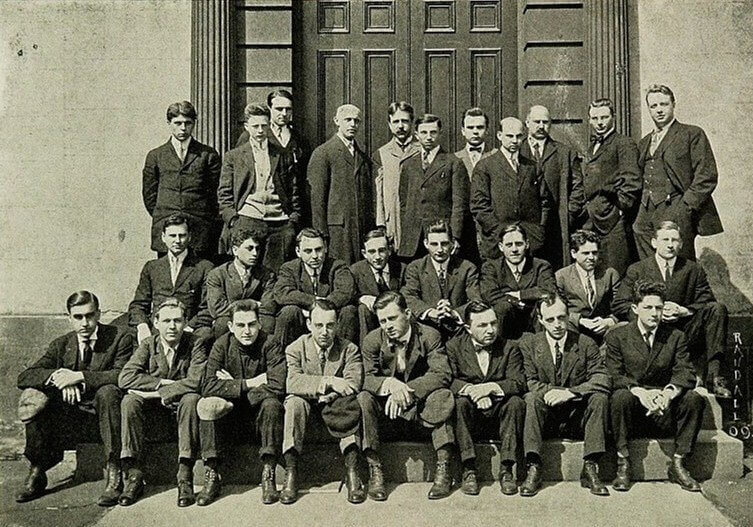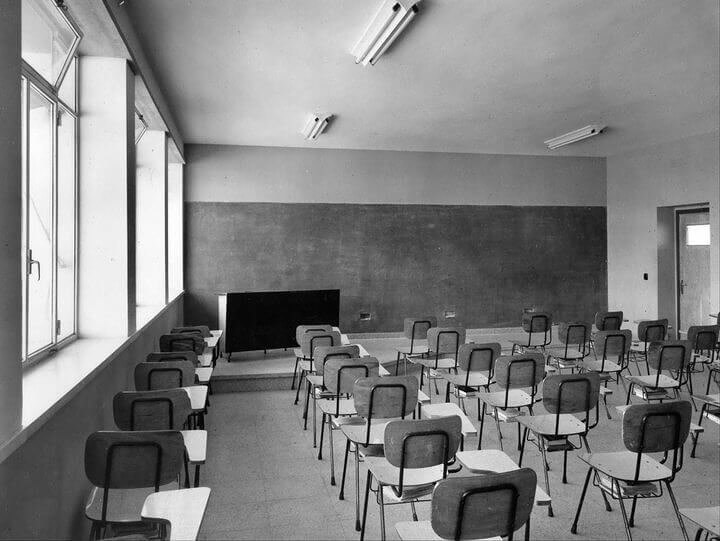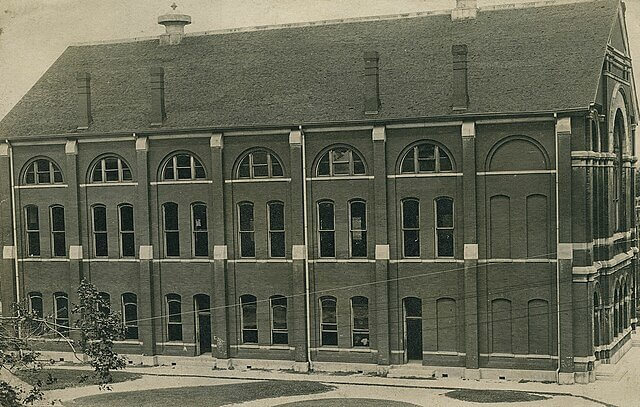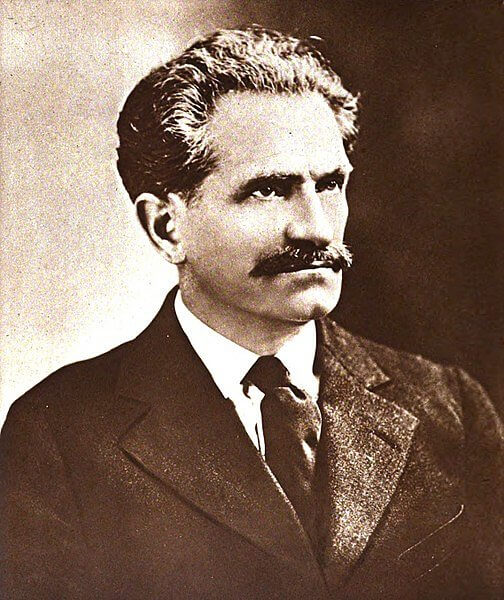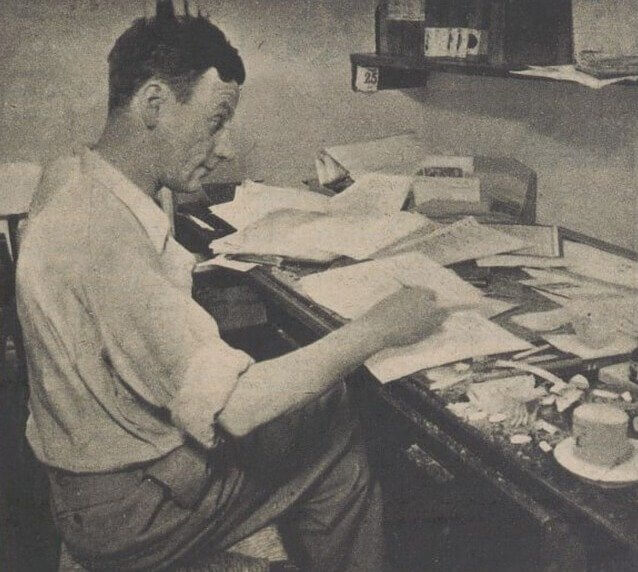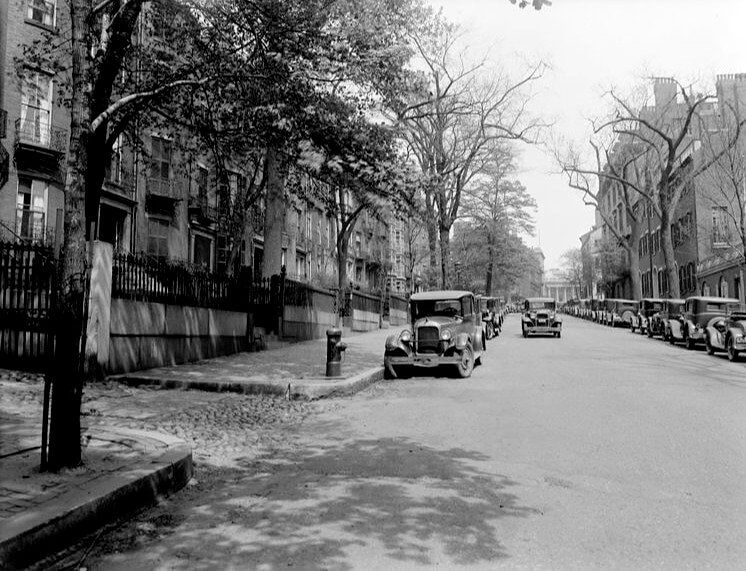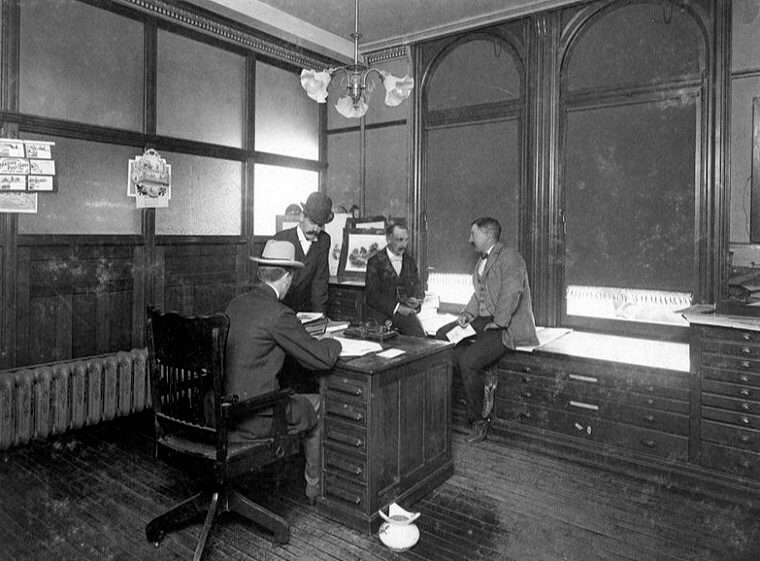Early Hints of Genius
William Sidis was born in 1898 in Boston, Massachusetts. And it didn't take long for some to notice that there was something very special about Sidis. Reportedly, he could speak multiple languages by the time he was only eight years old. According to NPR, the boy could read the New York Times before he was two years old, and among the different languages he could speak were Latin, Turkish, and Hebrew.
However, by most accounts, Sidis really shined when it came to math. His talent with numbers would go on to allow him to make history but also haunt him later in life.
Making Harvard History Before He Even Turned 12
Sidis was only 11 years old when he officially became enrolled at Harvard University. The school is one of the most prestigious, if not the most prestigious, in the U.S. and one of the top schools in the world. However, Sidis was actually accepted into the school when he was only nine years old, but he was advised to wait a couple of years in order to mature a bit.
While he certainly made history at Harvard, he didn't have a fun time there, and his experiences would no doubt go on to help shape the rest of his life.
An IQ Higher Than Einstein's
Albert Einstein is considered by many as one of the smartest, if not the smartest, human beings to ever live. However, what if we told you that a young Sidis had an IQ perhaps double that of Einstein's? It's estimated that his IQ was somewhere between 250 and 300. So, if he had such a high IQ, possibly the highest ever recorded, why didn't he go on to change the world?
Some of Sidis's troubles can be traced back to when he was just a boy when his parents began grooming him for greatness and first developed exceedingly high hopes for their son.
Sidis's Parents Were Pretty Smart, Too
Sidis wasn't the only smart member of his family. His father was a pretty famous psychologist, while his mother was a very talented doctor. Both of his parents had fled from other countries to America years before he was born. When his mother fled from Russia, the country was experiencing a series of religious persecutions, while his father fled his country due to political oppression. However, it's hard to say if this had any bearing on a young Sidis.
It's also hard to say if it influenced his political or social beliefs when he grew older. However, his mother and father's parenting methods almost certainly had an effect on him.
William's Parents Wanted to Push Him to Be the Greatest
Young Sidis's education started early. His parents famously believed that you could teach genius, so that's what they set out to do. According to NPR, his family spent all their savings on things like maps, books, and other educational items for Sidis. And it ended up paying off, at least in some way, because Sidis had started to master English before he could walk, and it wouldn't be long before he'd pick up other languages.
He would go on to master other languages before most mastered their mother tongue. He also went on to do a couple of other things at his young age that many people try and fail at their entire lives.
His Father's Keys to Success
Sidis's father, Boris, was so sure of his parenting techniques that he wrote an entire book explaining his son's progress. It was called Philistine and Genius. "We can at that early period awaken a love of knowledge which will persist through life," he wrote. The 1911 book also harshly criticized the American education system, saying that it didn't inspire the same love for learning that he tried to inspire in Sidis.
"There is no place for genius in our schools. Originality is suppressed. Individuality is crushed. Mediocrity is at a premium," he wrote, adding that it's critical to begin education at an early age.
At Five Years Old, He Was Writing Entire Anatomy Books
It's hard to tell if Sidis's father's methods actually worked or if Sidis was simply already a genius when he was born. However, what's not in dispute are some of the incredible achievements Sidis accomplished before he'd even hit puberty. The boy wrote an anatomy textbook when he was still a child, and he came up with his own formula for counting historical days when he was only five years old.
Sidis also wrote French poetry, invented his own language, wrote a novel, and came up with a constitution for a utopian society, according to NPR. So, it's no surprise that the school system didn't do much to challenge him.
He Could Speak 8 Languages by the Time He Was Six Years Old
Some people just have a talent for learning multiple languages, and if you've ever doubted that, just take Sidis, for example. His own father had a knack for learning languages, but Sidis was on another level completely. By the age of six, he could speak English, Armenian, Turkish, Hebrew, Russian, German, French, and Latin. He'd also come up with his own language. If that isn't incredible, then we don't know what is.
It just goes to show just how talented Sidis was and why he was so different from other young prodigies that have come both before him and since.
Unlike Most Other Geniuses, He Was Exceptional in Every Single Subject
Most child prodigies excel in one or two areas. For example, it's not unheard of for a young person to excel at, say, music or math and just be average or slightly above it in other areas. However, that's part of what made Sidis so special, according to his biographer, Amy Wallace. She told NPR, "One thing that was very unusual about [Sidis] compared to other child prodigies [is that] very few prodigies have multiple abilities."
Sidis excelled at nearly every subject that was thrown his way, from poetry to science to history and political theory. He was a genius in every sense of the word.
Preparing for Life at Harvard
In Boris's eyes, there was only a handful of places that offered the kind of opportunities and education that his son would benefit from, and one of those places was Harvard University. However, when he was accepted at just nine years old, the school advised Boris to wait a couple of years so that Sidis could emotionally mature. So, that's exactly what Boris did, waiting until his son was 11 to enroll him.
However, as it turned out, it might've benefitted Sidis a lot more if his father had waited longer. His time at Harvard would leave scars that would last a lifetime.
Sidis's Harvard Record
When Sidis was enrolled at Harvard at just 11 years old, he became the youngest enrollee ever. His record still stands today. There are other young prodigies who were enrolled at Ivy League schools at the ages of 12, 13, and so on, but none as young as Sidis. However, there might be a good reason for that, and it could have to do with what happened to Sidis later on.
The fact that Sidis's name is all but forgotten today says a lot about what happened to him next and the way society remembers one of the smartest people to ever live.
An IQ Higher Than Einstein's
By all accounts, Sidis was extraordinarily talented, and all you have to really do to figure that out is take a look at his achievements. However, as one might expect, his IQ tells us the same thing. Abraham Sperling was a mathematician and psychologist who had a chance to administer an IQ test to Sidis. He later wrote of Sidis, “His [IQ] score was the highest that had ever been obtained.”
Some estimates put it at double that of Einstein, while others say it was anywhere from 50 to 100 points above Einstein's IQ. Either way, that's an incredible thing to think about.
At Just 11 Years Old, He Gave a Lecture at Harvard
It's not a stretch to say that Sidis may have been one of, if not the smartest person to ever live. His IQ would've been higher than Steven Hawking's and Isaac Newton's. So, it's not hard to believe that at only 11 years old, he walked up to a podium at Harvard and went on to give a lecture at the Harvard Mathematical Club, no doubt turning a few heads in the process.
And his lecture wasn't on a simple subject, either. His advanced lecture caught the attention of one person in particular, who just happened to be in the audience that day.
Brilliant MIT Physicist Mr. Comstock Gets His First Glance of Sidis
Sidis went on stage that day to talk about the mathematical concept of four-dimensional bodies, which is pretty advanced. There were mostly advanced students and some professors in the audience. One of those in attendance was Daniel Comstock, who was a faculty member and a physicist at MIT. It didn't take long for Comstock to make a bold prediction about the young Sidis up on stage that day in 1910.
However, that bold prediction didn't exactly come true, despite Sidis being armed with everything he needed to make a dramatic difference in the world after he left university.
Comstock's Bold Prediction About Sidis
Comstock would later go on to write in his autobiography that he had very high hopes for Sidis. After seeing him in 1910, he said, “I predict that young Sidis will be a great astronomical mathematician. He will evolve new theories and invent new ways of calculating astronomical phenomena. I believe he will be a great mathematician, the leader in that science in the future,” according to his biography.
Unfortunately, we all know that's not exactly what happened. Still, it's saying something when one of the world's leading physicists at the time predicts an 11-year-old is going to grow up to completely alter our view of the universe.
Making Headlines Everywhere
It didn't take long for news to get out that the youngest-ever Harvard enrollee had started classes. The media at the time quickly picked up on the boy wonder, and the story captivated readers throughout the country. In fact, the media attention would never really fully go away. His story was one that pretty much everyone at the time had heard about. A fact that Sidis didn't necessarily care for himself.
It probably didn't do much to endear him to his fellow students, either. In fact, by most accounts, he was treated rather badly by other students at Harvard.
He Was an Unpopular Boy at School
Famous architect Buckminster Fuller went to school at Harvard at the same time as Sidis, and what he had to say about him pretty much sums up Sidis's time there. "Most students considered him a freak. He was 16 when I knew him, but his parents still sent him to school dressed like a boy of 12. In those days, a boy automatically put on long trousers when he was 14, but Willy Sidis still wore Little Lord Fauntleroy short pants and high-buttoned shoes," he said.
Wallace, the biographer, said, "He had been made a laughing stock at Harvard. He admitted he had never kissed a girl. He was teased and chased, and it was just humiliating."
An Unexpected Speech to Reporters
Many within Harvard still expected great things from a young Sidis despite all the reports of teasing. It's not hard to see why, considering his level of genius. However, during graduation, Sidis gave a speech that offered a look at what might become of him and how he felt about his time in academia. The speech was given in front of reporters in 1914, and it started off normal enough.
Sidis started off by declaring, "I want to live the perfect life," but that's when things took a turn, and people started to scratch their heads, wondering what had happened.
Becoming a Hermit
Sidis, in his speech, went on to say, "The only way to live the perfect life is to live it in seclusion. I have always hated crowds." His outlook on the world was one of pessimism, and he'd obviously been affected negatively by his experiences with other students while at Harvard. However, many immediately began to wonder if Sidis really was about to go and shut himself away from the rest of the world.
And if so, had the world just missed out on benefitting from any contributions Sidis may have been able to make because of ridicule from other students at the college?
Swearing Off Women and Marriage
If people needed any other clues as to whether Sidis really did intend to shut himself off from the world, they needed to only look at the fact that he'd decided to swear off women and marriage. His decision was no doubt due to the teasing he'd suffered while in college. "All he wanted was to be away from academia [and] be a regular working man," Wallace wrote in her biography of Sidis.
Over the next couple of years, his life would take a couple of turns that just about nobody, not even Sidis himself, could've expected though. And it started with a teaching position.
He Was Bullied Out of Harvard
If Sidis was going to take up a teaching position anywhere, you might expect him to take one at Harvard or another prestigious Ivy League School. However, that's not what happened. In fact, Sidis ended up having to leave Harvard because of alleged threats he'd received. So, he took a job teaching trigonometry and geometry at Rice University when he was still only 17 years old — much younger than his students.
Of course, the teaching didn't go well, and it wasn't long before he dropped out completely to return to the school he'd started at when he was only 11 years old.
Returning to Harvard
When Sidis returned to Harvard, he decided to pursue different studies. He enrolled in law school and did quite well, by all accounts. Of course, that was probably to be expected. However, it wasn't long before he dropped out once again. This time, he left Harvard in 1919. It was probably pretty apparent to anyone who was close to Sidis that something just wasn't going right for the young man.
Despite having done well academically, just about everywhere he went, he couldn't be bothered to finish getting his degree. If that didn't raise any alarms, what happened next certainly did.
He Became Involved in Social Activism
America wasn't exactly known for protecting workers' rights in the early 20th century. In fact, it was a time of mass protests, strikes, and socialist movements. During one of those socialist movements, Sidis found himself advocating for workers' rights. He also found himself being arrested after he screamed, "To hell with the American flag." We're not sure what the legal reasoning for his arrest was, but the run-in with the law did make the news. The demonstration also ended up turning into a riot.
We're also not quite sure how his parents responded, considering Sidis wasn't exactly going down the same path that they'd hoped he would. They'd basically trained him for greatness all of his life.
Sidis Goes on Trial
Again, this was a time in American history when a lot of people were very much opposed to socialism as they viewed it. So, when Sidis went on trial, and it was covered by the media, he didn't exactly make any friends. It was revealed that he supported the Russian Revolution, in addition to being a pacifist and a socialist. This wasn't long after the end of World War I.
At the time, Sidis's beliefs were viewed as just strange by some, including a lot of people in power, which might help to explain what happened to him next.
Boris Steps in to (unsuccessfully) Help His Son
At first, the judge had decided to sentence Sidis to 18 months in prison, which would've no doubt been extremely difficult for him. However, Sidis's father stepped in and offered to instead give him psychological help. The judge agreed and released Sidis on parole. No doubt, it helped that Boris was a famous psychologist at the time. From there, Sidis was sent to his father's institution in New Hampshire.
Unsurprisingly, things didn't go quite as well as Boris had probably hoped. If anything, it probably set the two's relationship back even further than it had already been.
Sidis's Time at His Father's Facility
Sidis wasn't exactly flattering in describing his father's facility. He later said that his time there equated to "mental torture." There isn't much evidence beyond that to say for sure what happened during his time at the facility, but it's pretty clear that he didn't enjoy it. When he was released, he doubled down on living a life that didn't involve outside pressure from society or from his parents.
Not long after he was released, he decided to completely leave academia and finally start living a life away from the spotlight. A spotlight that had dogged him throughout his still very young life.
Taking on Menial Jobs
After leaving school, Sidis took on a number of blue-collar jobs. Reportedly, he even went by a couple of different names during this time in his life. He also moved from city to city, often taking the same types of jobs. It was all done in an effort to lay low and stay out of the spotlight. And it worked for a while. Despite his genius and his history, he was able to blend in with the rest of society pretty seamlessly.
However, he could never really escape from his past, and it wasn't long before someone came looking for that same boy wonder who showed so much potential as a child.
Sidis Is Found in New York City
Despite trying to lay low, it wasn't long before a reporter found him in New York City, where he was working as a machine operator, making around $23 a week. The world had wanted to know what happened to Sidis, who was one of the smartest people to ever live. It turned out he'd been taking similar jobs wherever he moved to. However, he hadn't completely given up his academic pursuits during this time.
Despite giving up on society and academia, he was still writing books. However, we may never know just how many he actually wrote over the course of his life.
Forging His Own Legacy, His Way
By this point in his life, he'd not really been in contact with his parents. They'd probably hung over the rest of his life like a large rain cloud, and he wanted to do things his own way. That might be why he continued to write throughout his life, especially during the years when he was taking menial jobs. He published The Animate and the Inanimate in 1925, which dealt with his own theory of life and the cosmos.
However, the book would remain mostly ignored until it was basically rediscovered in an attic in 1979. Sidis would go on to publish many other titles after The Animate and the Inanimate was released.
Using Different Pen Names
We're not exactly sure if Sidis began writing under different pen names as a response to The Animate and the Inanimate being ignored or if he was just trying to stay out of the spotlight. Either way, he went on to publish many more titles under all kinds of different names right up until his death. However, that has also complicated things a bit for historians and those wanting to learn more about Sidis.
His extensive use of pseudonyms may have been both a response to this book being ignored and just a simple way to stay under the radar while he continued to live a normal life.
Titles in His Name
While it's unknown just how many books he actually authored, it's probably safe to say there are quite a few out there. When it comes to books that were written under his name, we only really know of two that were written by him when he was an adult. The first was The Animate and the Inanimate, and the second was called The Tribes and the States. The latter dealt with the history of Native Americans.
It mainly deals with the tribes in the Northeast and the effect they had on pre and post-revolution America, but it was never completely finished. Both of his publications have decent reviews, even today.
The Lost Sidis Books
Due to his extensive use of pseudonyms, it's not actually known how many lost books by Sidis are actually out there. We do know that he published Notes on the Collection of Transfers under the name Frank Folupa in the 1920s. However, it wasn't nearly as serious as some of his other works, and he appears to just be exploring one of his fascinations in the book — streetcars and trolleys.
The text is filled with different facts and tidbits of trivia associated with streetcars. There's even some poetry and rather childish jokes in there. It turns out that Sidis was actually quite fond of laughing and making jokes later in life.
Living a Life Under the Radar
By many accounts, Sidis would regularly move from city to city, and he was something of an intellectual nomad. When he slipped up, and people started to get an idea about just how intelligent he was, he'd simply pack up and start over in a new city. Sidis was so averse to the spotlight by this time that he took great precautions to make sure he wouldn't be found out.
However, Sidis would learn that no matter how many precautions he took, he'd be found if someone really went looking for him. That someone eventually came in the form of a reporter from The New Yorker.
A Reporter Tracks Sidis Down
The female reporter had been sent by The New Yorker to befriend Sidis and write an article about what had happened to him, according to Wallace. The reporter found him and, in 1937, released an article detailing his story. "The very sight of a mathematical formula makes me physically ill," Sidis was quoted as saying. He also said that all he wanted to do was to continue to work the same types of jobs he'd worked for the past couple of years. When he was asked why he thought he didn't live up to predictions about him, he responded, "It's strange, but, you know, I was born on April Fool's Day."
However, when the article was released, Sidis was pretty unhappy with how he was portrayed in the story. His main complaint was that he said it made him look like a crazy recluse.
Sidis Comes Out of Hiding
"Sidis thought the article's description of him was humiliating," according to NPR. So, he decided to come out of hiding, and his first order of business was to sue The New Yorker for libel. He went on to try and prove that the article had caused "grievous mental anguish [and] humiliation," Wallace said. However, luck wasn't on his side at the time, as his case was initially thrown out by the court.
His lawsuit also had the added effect of putting him in a place that he'd tried to avoid his entire life. He was now firmly back in the spotlight.
In the Spotlight Once More
All of the attention from the lawsuit meant that the world was once again getting a peak as to what happened to Sidis. Not only that, but the case is still remembered today as an important case in American history and privacy law. Despite putting in years of effort to remain out of the spotlight and continue to live life as a normal person, Sidis was making headlines once again.
His case would take a turn, but so too would his life over the next couple of years. During this time, Sidis continued to do what he'd done over the past couple of years and worked different menial jobs.
Sidis Wins His Case and Suffers a Brain Hemorrhage
Sidis did eventually prevail in his case against The New Yorker. However, it had taken years since the article was published, and he didn't get the verdict he wanted until 1944. Unfortunately, he suffered a brain hemorrhage that very same year. It's worth noting that his father also suffered a brain hemorrhage decades before. At the time, Sidis was working at the State Department of Unemployment Compensation, performing clerical services.
Sidis wouldn't be able to recover from the hemorrhage, and he later died not long after. However, he'd managed to live most of his life on his own terms up until that point.
Sidis and His Legacy Today
While Sidis had finally managed to live a life under the radar for the majority of his time on Earth, he is still remembered somewhat today. Whether that be for his role as a boy genius, his authorship, or his part in U.S. legal history, his name hasn't been completely erased from the history books. And although his life was short, by many accounts, Sidis had been able to largely overcome some of the early difficulties he'd had.
At least, that's according to his biographer. "People who knew him adored him," Wallace said. "So I think he really went from being completely traumatized as a young boy to becoming a happy man."
